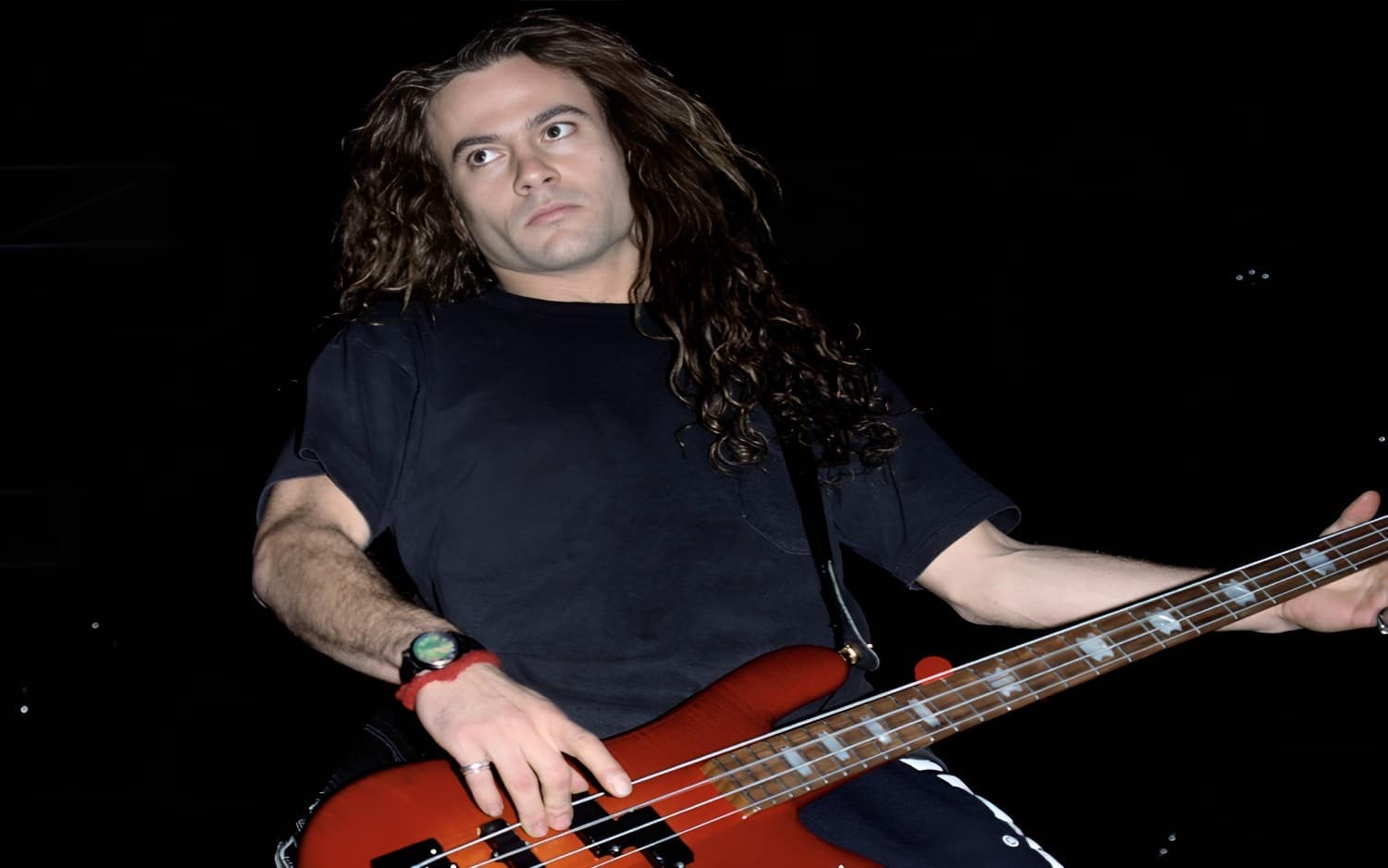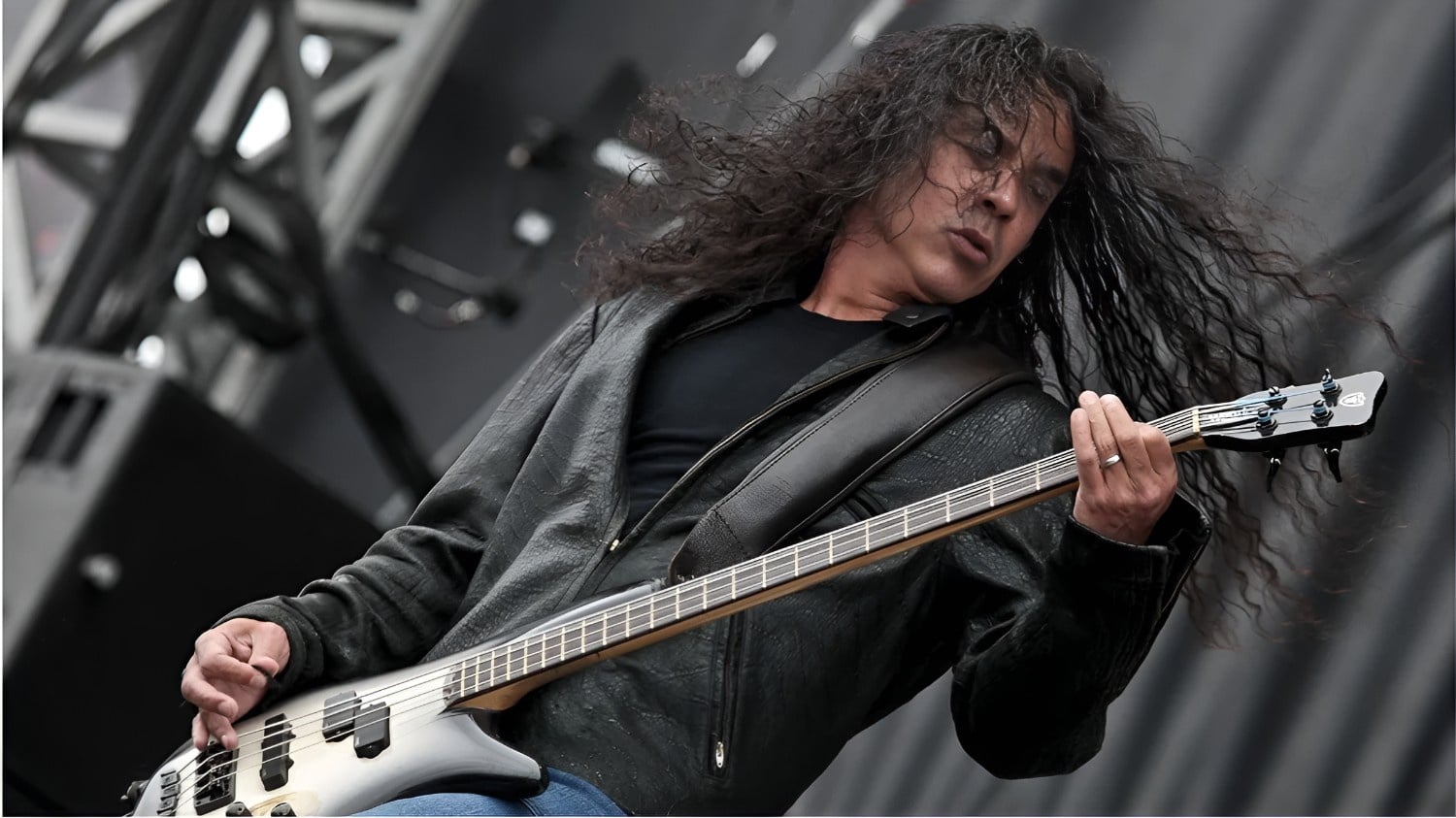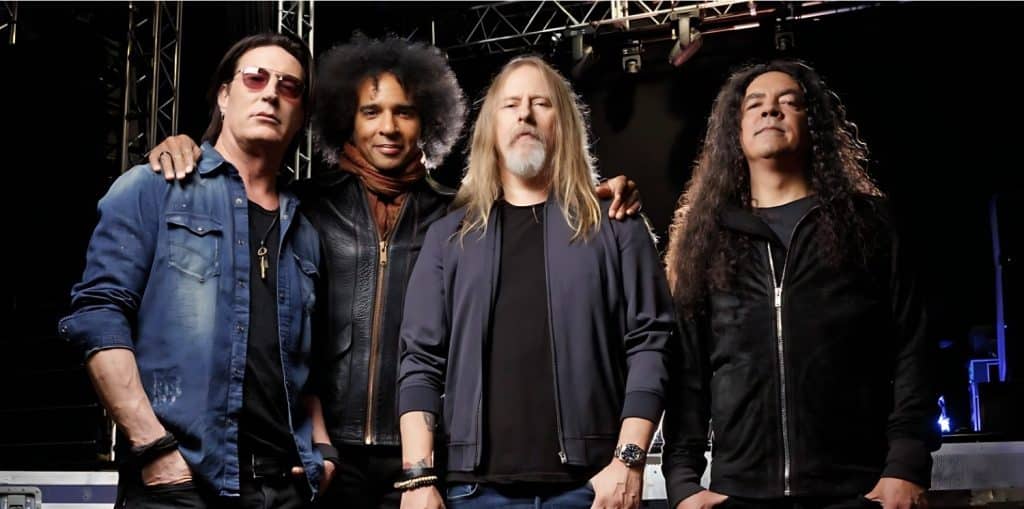Attention all grunge rock fans!
Have you ever wondered about the incredible journey of Alice in Chains and the evolution of its band members?
From the iconic Layne Staley to the powerhouse William DuVall, Alice in Chains’ story is one of tragedy, determination, and exceptional musical prowess.
Imagine being a part of a band that helped define a generation, only to lose your lead singer and friend to addiction.
How would you carry on and keep the music alive?
In this article, we’ll investigate Alice in Chains’ fascinating history and discuss its members’ triumphs and struggles as they navigated the ever-changing landscape of rock music.
Get ready to be inspired by the resilience and dedication of these legendary musicians as we uncover the untold stories behind Alice in Chains’ evolution.
Founding Members
The founding members, who laid the groundwork for the band’s unique sound and style, are at the heart of Alice in Chains’ success.
Let’s look at the two key figures who played a pivotal role in the band’s formation and early years.
Jerry Cantrell: Lead guitarist and co-vocalist

Jerry Cantrell, born March 18, 1966, in Tacoma, Washington, grew up in a musical family.
His mother played organ in church, and his father was a country singer.
Cantrell’s interest in music began early, and he started playing guitar at 13.
He cites his influences spanning classic rock to heavy metal, including bands like Kiss, Black Sabbath, and Judas Priest.
In 1987, Cantrell met drummer Sean Kinney, and the two formed a band called Diamond Lie.
They later recruited bassist Mike Starr and lead vocalist Layne Staley, changing their name to Alice in Chains.
Cantrell’s unique guitar style, characterized by heavy riffs and dark, brooding melodies, became a defining element of the band’s sound.
He also served as the primary songwriter, penning many of their most iconic tracks, such as “Man in the Box,” “Rooster,” and “Would?”
Layne Staley: Lead vocalist

Layne Staley, born Layne Rutherford Staley on August 22, 1967, in Kirkland, Washington, had a tumultuous childhood marked by his parents’ divorce and his struggle with drug addiction.
Staley found comfort in music, drawing inspiration from heavy metal and glam rock artists like David Bowie, Queen, and Alice Cooper.
Before joining Alice in Chains, Staley fronted a glam rock band called Alice N’ Chains.
In 1987, he met Jerry Cantrell at a party and was impressed by his guitar skills.
Staley joined Cantrell’s band, alternating his distinctive vocal style between a powerful, gritty delivery and a haunting, melodic tone.
Staley’s lyrics often dealt with personal struggles, addiction, and inner demons, adding depth and raw emotion to the band’s music.
His charismatic stage presence and undeniable talent made him a magnetic frontman, captivating audiences with his intense performances.
Staley’s contributions were instrumental in shaping Alice in Chains’ unique sound and establishing them as a groundbreaking force in the grunge and alternative metal scenes of the early 1990s.
Key Members Over the Years
While the founding members were instrumental in establishing Alice in Chains’ identity, the band’s lineup has changed.
In this section, we’ll study the contributions of two key members who helped shape the band’s evolution.
Mike Starr: Original bassist

Mike Starr, born April 4, 1966, in Honolulu, Hawaii, was the original bassist for Alice in Chains.
Starr’s family moved to Seattle when he was a child, and he grew up loving music.
He played in various bands throughout his teenage years before joining Alice in Chains in 1987.
Starr’s bass playing was integral to the band’s early sound, contributing to the heavy, sludgy riffs that defined their music.
He performed on the band’s first two studio albums, “Facelift” (1990) and “Dirt” (1992), which featured classic tracks like “Man in the Box,” “Would?,” and “Rooster.”
However, Starr’s struggle with drug addiction led to tensions within the band, and he was eventually fired in 1993 during the “Dirt” tour.
Tragically, Starr passed away on March 8, 2011, at the age of 44 due to a prescription drug overdose.
Sean Kinney: Drummer

Sean Kinney, born May 27, 1966, in Renton, Washington, has been the drummer for Alice in Chains since its formation in 1987.
Kinney met Jerry Cantrell while working at a music store, and they decided to form a band.
Kinney’s unique drumming style, characterized by his unconventional time signatures and intricate patterns, became a defining element of Alice in Chains’ sound.
Kinney has performed on every Alice in Chains release, from their debut album “Facelift” to their most recent studio album “Rainier Fog” (2018).
His consistency and dedication have been crucial to the band’s success and longevity.
In addition to his work with Alice in Chains, Kinney has collaborated with other notable musicians, such as Johnny Cash and Krist Novoselic.
Despite the band’s struggles with addiction and the loss of Layne Staley, Kinney remained committed to keeping the music of Alice in Chains alive, playing a key role in the band’s reunion in 2005 and their subsequent success with new lead vocalist William DuVall.
Transition and New Members
As Alice in Chains grew and evolved, new members brought fresh perspectives and talents to the band.
Here, we’ll discuss the stories of two individuals who played significant roles in the band’s later years and helped carry the torch forward.
Mike Inez: Bassist (joined in 1993)

Mike Inez, born May 14, 1966, in San Fernando, California, is a versatile bassist known for his work with various rock bands.
Before joining Alice in Chains, Inez played with Ozzy Osbourne and Slash’s Snakepit. He was recruited to replace Mike Starr in 1993 during the “Dirt” tour.
Inez’s joining marked a new chapter for Alice in Chains, as he brought his style and technique to the band’s evolving sound.
He first appeared on the band’s EP “Jar of Flies” (1994) and later contributed to their self-titled third studio album “Alice in Chains” (1995).
Inez’s bass playing can be heard on iconic tracks such as “No Excuses,” “I Stay Away,” and “Grind.”
His solid rhythm and melodic lines perfectly complemented Jerry Cantrell’s guitar work, helping maintain the band’s signature sound while adding new dimensions to their music.
William DuVall: Lead vocalist and rhythm guitarist (joined in 2006)

William DuVall, born September 6, 1967, in Washington, D.C., is a singer, songwriter, and guitarist who had a successful career in various punk and rock bands before joining Alice in Chains.
DuVall’s previous projects included Comes with the Fall and Neon Christ, showcasing his powerful vocals and guitar skills.
In 2006, DuVall was invited to join Alice in Chains as co-lead vocalist and rhythm guitarist following the tragic death of Layne Staley in 2002.
While filling Staley’s shoes was no easy task, DuVall managed to bring his unique style and energy to the band while respecting his predecessor’s legacy.
His contributions can be heard on the albums “Black Gives Way to Blue” (2009), “The Devil Put Dinosaurs Here” (2013), and “Rainier Fog” (2018), which feature his co-writing credits and vocal performances on tracks like “Check My Brain,” “Hollow,” and “The One You Know.”
DuVall’s addition to the lineup helped Alice in Chains move forward and continue creating music that remains true to their iconic sound while exploring new territories.
His presence on stage and in the studio has been crucial in maintaining the band’s relevance and introducing their music to a new generation of fans.
Contributions and Legacy
Beyond the individual members, Alice in Chains’ music has left an unforgettable mark on the rock and grunge genres.
Let’s examine the band’s songwriting process, musical style, and lasting impact on the music world.
Songwriting and Musical Style
Alice in Chains’ songwriting has always been a collaborative effort.
Jerry Cantrell and Layne Staley were the primary writers during the band’s early years.
Their complementary styles, with Cantrell’s dark, introspective lyrics and Staley’s haunting melodies, created a unique sound that set Alice in Chains apart from their peers.
The band’s music evolved, incorporating heavy metal, acoustic rock, and sludge elements while maintaining their signature sound.
With the addition of William DuVall, the band’s songwriting process became even more collaborative.
DuVall’s contributions, along with those of bassist Mike Inez and drummer Sean Kinney, have allowed Alice in Chains to explore new musical territories while staying true to their roots.
The band’s more recent albums showcase a matured sound that builds upon their earlier work, with complex harmonies, powerful riffs, and thought-provoking lyrics.
Influence on the Grunge Movement
Alice in Chains was one of the pioneering bands of the grunge movement, alongside Nirvana, Pearl Jam, and Soundgarden.
Their unique blend of heavy metal and alternative rock, Layne Staley’s distinct vocal style, and Jerry Cantrell’s dark, brooding guitar work helped define the genre’s sound.
The band’s raw, emotionally charged music resonated with fans and influenced countless musicians in the following years.
Alice in Chains’ impact on the rock and grunge genres is undeniable.
Their music has endured, with classic albums like “Facelift,” “Dirt,” and “Alice in Chains” remaining vital parts of many rock fans’ music collections.
The band’s ability to overcome personal struggles and tragedies, including the loss of Layne Staley, and continue creating powerful, relevant music is a testament to their enduring legacy.
Alice in Chains inspires new generations of musicians and fans today, solidifying their place as one of the most influential and respected bands in rock history.
Personal Stories and Anecdotes
While the music is at the forefront, the band members’ personal experiences and relationships have significantly shaped Alice in Chains’ journey.
In this final section, we’ll share some behind-the-scenes stories and insights into the interpersonal dynamics that have influenced the band’s creative process.
Behind-the-Scenes Stories
Throughout their career, Alice in Chains members have experienced numerous memorable moments during recording sessions and tours.
One such instance occurred during the recording of their debut album, “Facelift,” when producer Dave Jerden insisted on creating a specific guitar sound for the track “We Die Young.”
Jerden had Jerry Cantrell play his guitar through a bass amp to achieve the desired effect, showcasing the band’s willingness to experiment and push boundaries in their music.
Another notable moment happened while recording the “Dirt” album: Layne Staley wrote “Hate to Feel” lyrics on the back of a Mama’s Mexican Kitchen receipt.
This anecdote highlights the spontaneous and organic nature of the band’s songwriting process, with inspiration striking in unexpected places.
Interpersonal Dynamics
The relationships among the band members have played a significant role in shaping their music and career.
Jerry Cantrell and Layne Staley formed a close bond early on, with their shared experiences and struggles informing much of their songwriting.
This connection allowed them to create deeply personal and emotionally rich music.
However, the band’s interpersonal dynamics were not always smooth.
Staley’s battle with drug addiction strained his relationships with the other members, particularly during the later years of his life.
Despite these challenges, the band managed to maintain a level of professionalism and continued to create powerful music.
Following Staley’s passing, the remaining members of Alice in Chains had to navigate the difficult decision of whether to continue as a band.
William DuVall’s addition brought new energy and perspectives to the group, fostering a renewed sense of harmony and collaboration.
The current lineup has emphasized the importance of open communication and mutual respect in maintaining a healthy and productive working relationship, ensuring that Alice in Chains can continue creating meaningful music for years.
Conclusion
Alice in Chains’ story is one of incredible talent, diligence, and the enduring power of music.
From the band’s formation in 1987 to the present day, the individual members have each played a crucial role in shaping the distinctive sound and style that have made Alice in Chains a legendary force in the rock world.
Despite facing numerous challenges and tragedies, including the loss of iconic frontman Layne Staley, the band has managed to evolve and prosper, largely thanks to the contributions of key members like Jerry Cantrell, Mike Inez, and William DuVall.
Through their music and their legacy, Alice in Chains continues to inspire and influence generations of fans and musicians alike, cementing their place as one of the most important and precious bands of our time.





















